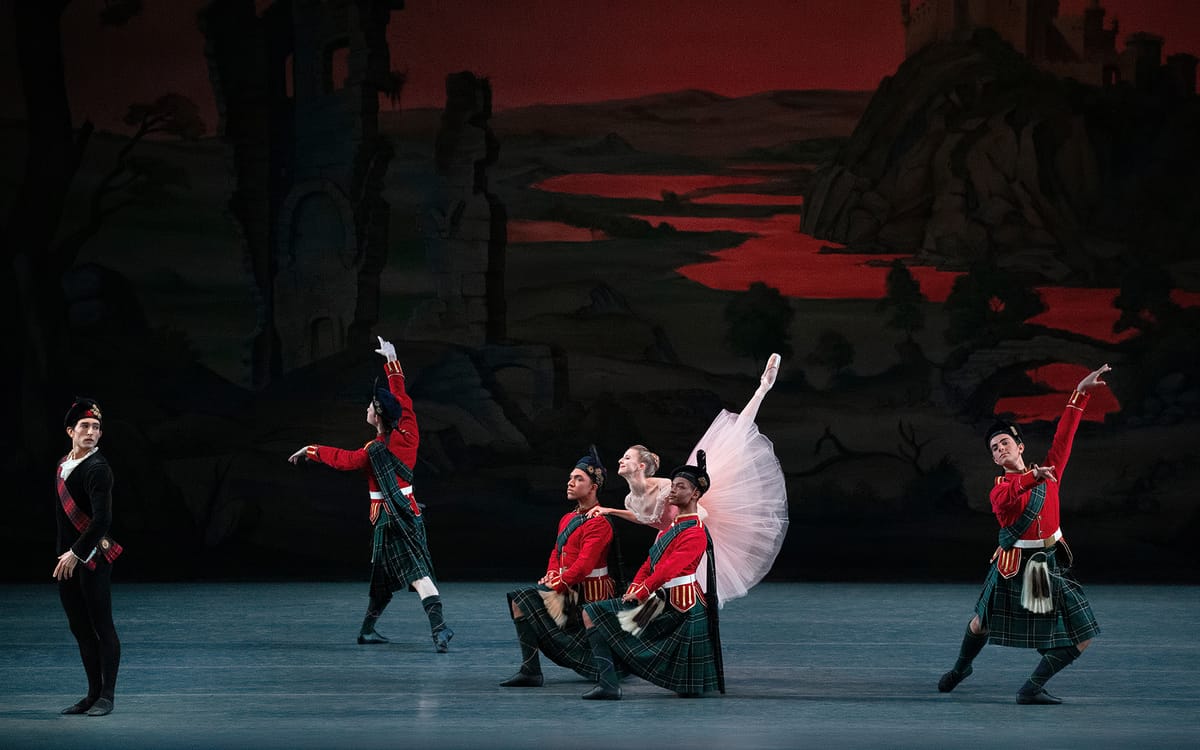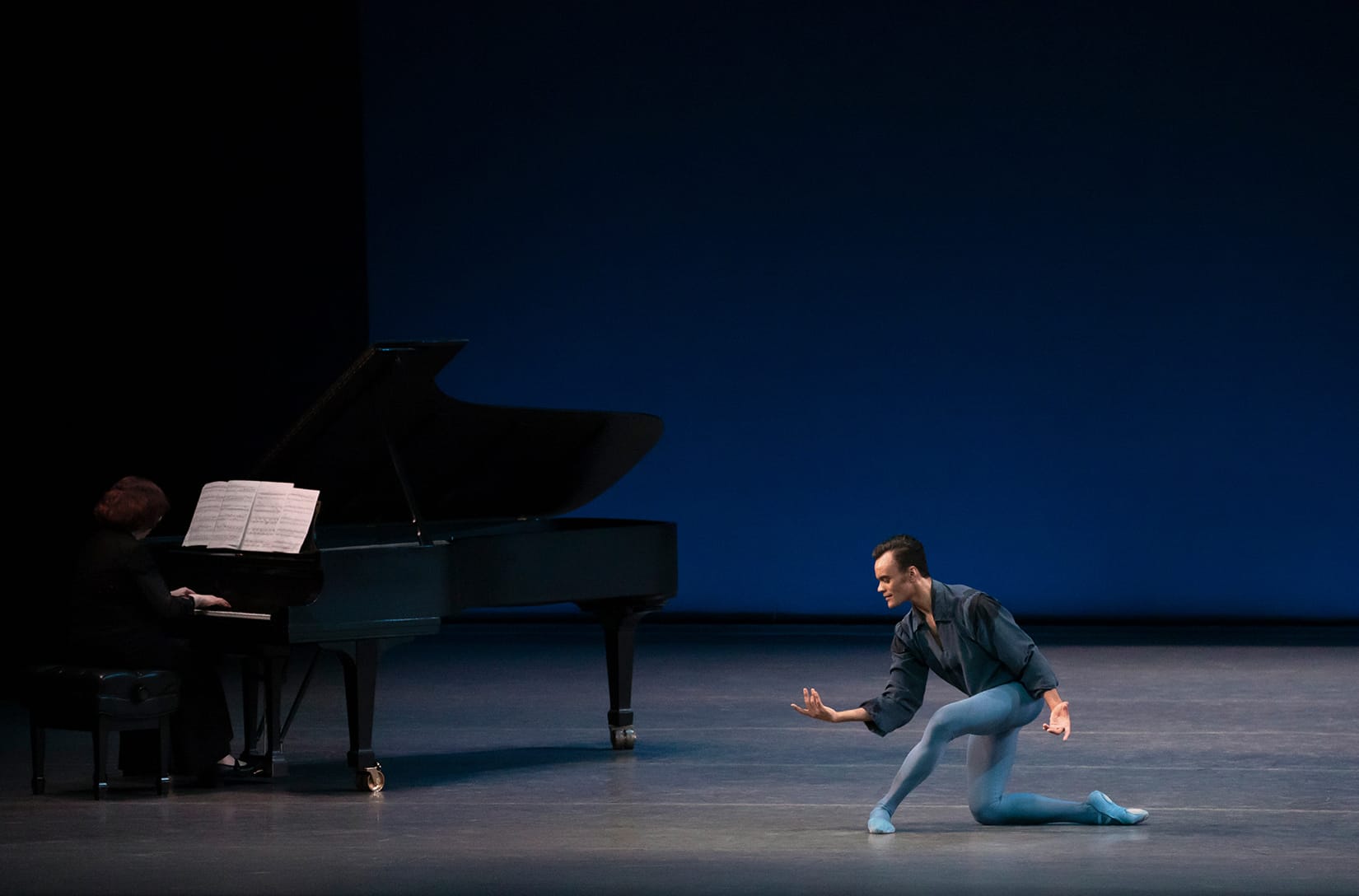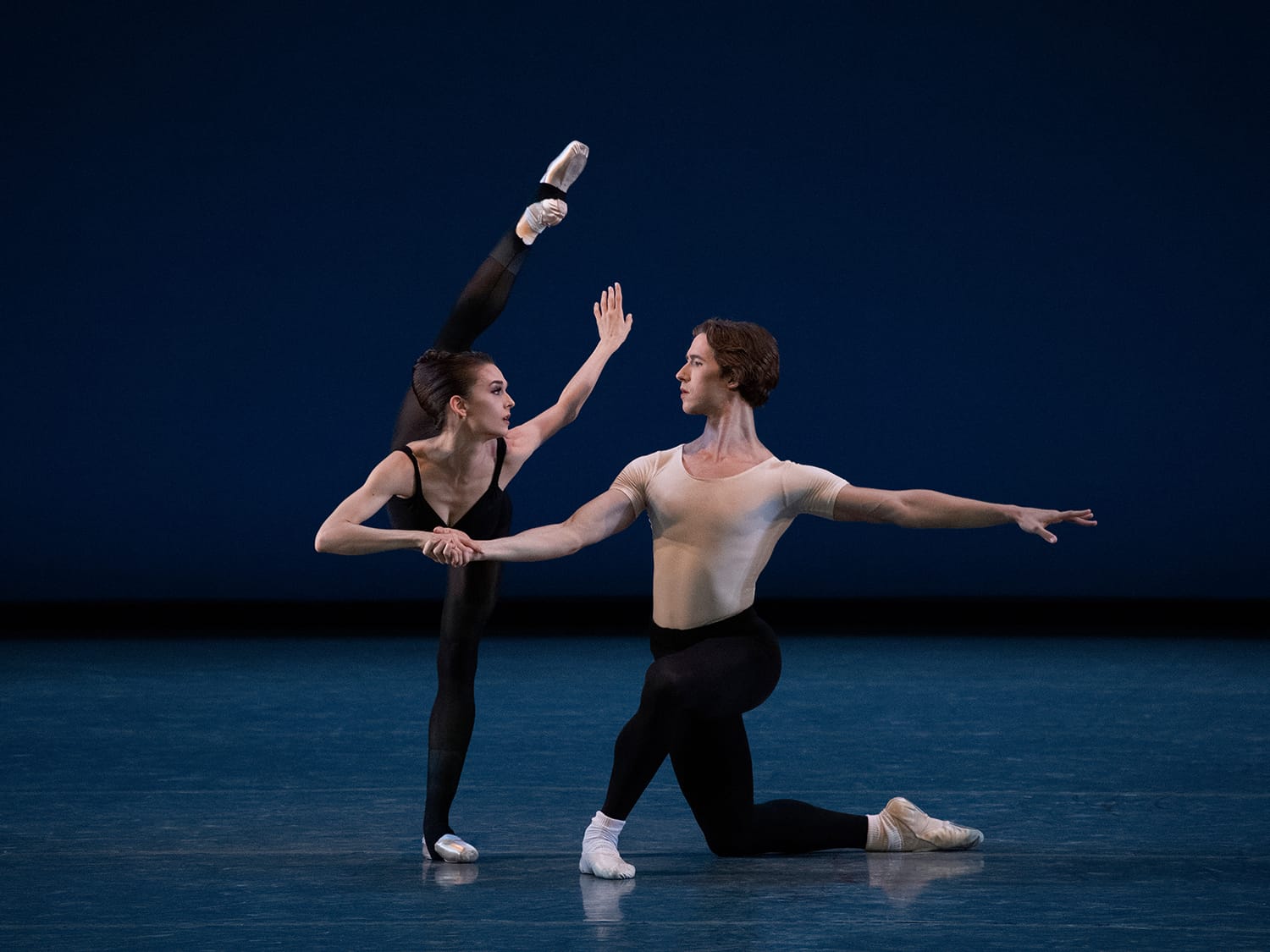Hear the Dancing

“Scotch Symphony,” “Duo Concertant,” "Sonatine", "Stravinsky Violin Concerto"
New York City Ballet
David H. Koch Theater
New York, New York
May 24, 2019
That the musicians, soloists and orchestra alike received the loudest and longest ovations throughout the night at this all Balanchine bill would probably have pleased the choreographer, who firmly believed that music is the floor for dancing. But that increasing volume and duration was in inverse proportion to the quality of the dancing. The evening opened with "Scotch Symphony" set to Mendelssohn's Symphony No. 3 (minus the first movement), a triptych, based on the composer's and choreographer's memories of their encounters with Scotland, the former in 1829 the latter in 1952. This revival featured three all but new casts including this one, with Ashley Laracey, Andrew Veyette and Rachel Hutsell getting their turn at this the last performance of the season, that timing a City Ballet specialty.
The first movement is led by a short dancer, known as The Little Scotch Girl, who must be speedy and proficient at any and all beaten steps, plucky and with a take charge manner. Hutsell had the pluck and the elegant swagger for the part, particularly through the shoulders. But her diagonal of beats, propelled by a fanfare from the brass, ignored that push, and stayed low to the ground, undercutting her authority as the leader of a corps of sixteen strong.
Since his days at the School of American Ballet, Andrew Veyette has made his name as an extroverted American virtuoso. So it was something of a surprise to find him cast as this palimpsest of the romantic hero of "La Sylphide", yet another incarnation of Balanchine's poet chasing his elusive muse. But with time has come gravitas. He looked more at ease with the technical demands of his solo, including turns which land on one leg at the cardinal points, than he had in "Stars and Stripes" a week earlier. And if Veyette hasn't quite found his inner James, but only his external attributes, that should change with more performances.
Ashley Laracey is one of the most lyrical dancers in the New York City Ballet. She is also one who has had to wait a long time to show off that lyricism in a principal role. The leading role in "Scotch Symphony", a 19th century sylph in the second scene propelled by 20th century speed in the third, would seem to fit her like a glove, and so it proved. With her hair piled high, she even looked like a Degas ballerina. Most surprising, and rewarding was how she bridged the gap between centuries. Rather than revving up both speed and attack, she kept the attack, muted and refined, of the adagio throughout the final movement, giving this "Scotch Symphony" a coherence and internal logic that it has always seemed to lack.

If Ashley Laracey could overcome the disjuncture between the two final movements of "Scotch Symphony", the same cannot be said of "Duo Concertant" performed by Ashley Bouder and Russell Janzen. Thorough professionals though they are, he is still at least a head taller than she. The resulting dissonance in both shape and line were just too hard to ignore, and one took refuge in the music (Arturo Delmoni, violin, Elaine Chelton, piano). Taylor Stanley and Megan Fairchild were more evenly matched physically in "Sonatine", Balanchine's rhymically witty promenade to Ravel. Fairchild is neat, clean, scrupulous, and forthright; all the steps were there. But from the moment Stanley took her hand and tucked it under his arm as they entered the stage, his gaze directed somewhere which we couldn't see, the inner life of the ballet was his, this walk in the park possibly a dream and certainly out of the ordinary.

The duets in "Stravinsky Violin Concerto" fail to ignite without some resistance between the partners and some sense of weight. The highlight of 'Aria I" may be the sequence in which the woman (here Sara Mearns) covers the stage by displacing herself limb by limb, like a crab trapped in a Slinky. Each elbow, hand, and rotation is in conversation with music. Mearns, her dancing grand in scale, smoothed out all the rough edges. Without them, the conversation is mute, or even unnecessary. Joseph Gordon, in the role originated by Peter Martins, was equally sleek, rather than the blend of Svengali and sculptor embodied in the part. This left Lauren Lovette as his Galatea/muse with no one to play off, so the duet lost its meaning. Only Aaron Sanz, opposite Mearns, had some fight in him.
This performance also brought to the fore one of the biggest challenges faced by the new administration: how to program. Balanchine, a gifted chef, compared it to composing a meal: appetizer, main course, perhaps a palate cleanser, and to send 'em home happy, dessert. At some point, someone decided that "Valse Fantaisie", a pas de six lasting eight minutes, should be an opener. This is serving the palate cleanser before the guests have had anything to eat. Next season, one program consists of "Donizetti Variations" and "Tchaikovsky Piano Concerto No. 2". To quote an old Wendy's ad, "Where's the beef?". Perhaps more distressing is the fact that four originally announced ballets were pulled – no reason given – before the spring season began, but well after the box office opens: Robbins' "Brandenburgs" and Balanchine's "Liebeslieder Waltzer" (presented for three performances at the end of the winter season), "Union Jack" and "Tombeau de Couperin", that last originally intended for this program rather than the two duets. "Union Jack" is on offer next season, but will we actually see it on stage? Who knows when "Brandenburgs", "Liebeslieder", or "Tombeau" will be programmed again. In addition, it is not reassuring to note that all the ballets that disappeared are by Robbins and Balanchine. If the company's founding choreographers are to be honored in both word and deed, their works need to be nurtured, cared for and, above all, performed more consistently than they were here.
copyright © 2019 by Carol Pardo



